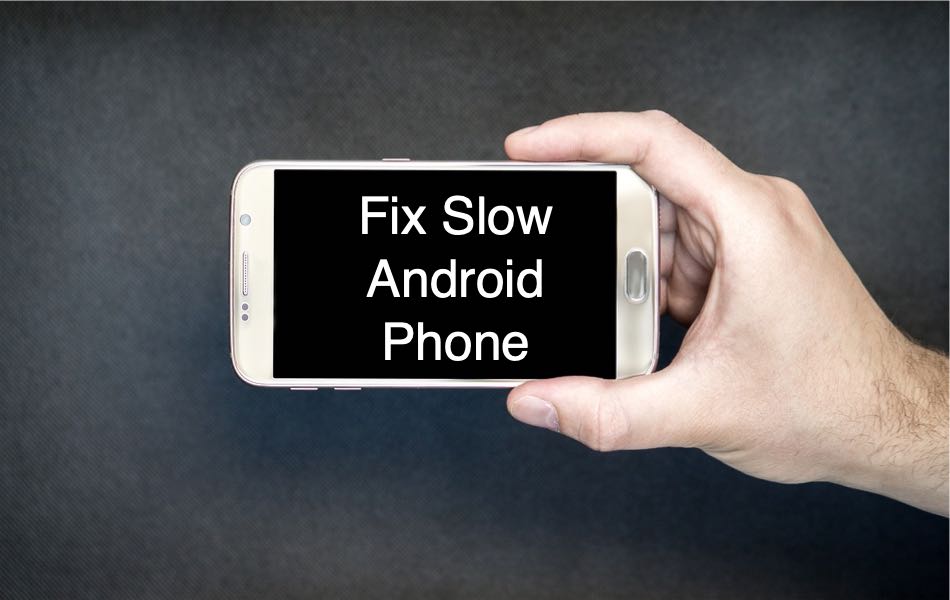4 Ways to Fix a Slow Android Phone
Our phones have become an integral part of our lives, helping us perform a variety of tasks, from communicating with others to shopping online. However, a number of issues can cause a device to slow down, including storage issues, outdated firmware, and many other reasons. When your smartphone lags or takes too long to respond, it can be both annoying and inconvenient. This guide will explore various ways to fix a slow Android phone if you’re experiencing such issues.
Recommendation: SEO Marketing WordPress Theme Onum
Repair a Slow Android Phone
Follow the instructions below to repair a slow Android smartphone, depending on the problem.
- Restart your phone
- Increase storage
- Update Android firmware
- Fix slow apps
1. Restart your Android phone
Your phone may be slow due to certain apps or processes running silently in the background. Therefore, in most cases, simply restarting your device will speed it up.
- To restart your device, long press the power button and select the “Restart” option.
- Alternatively, you can press and hold the power button for about 20 to 30 seconds or until it turns off, and then press the button again to turn it on.
If this was just a temporary issue, the device should now be responsive without any lags or freezes. If the phone is still slow after the reboot, you can proceed with other troubleshooting options.
2. Check and free up internal storage
One of the issues that can cause your device to slow down is the limited internal memory (ROM). Therefore, it is recommended to check if your device storage is full or almost full and free up some space to resolve the issue.
Check your device internal storage
- Go to the device main menu and select the Settings app (gear icon).
- Scroll down in settings and tap on Storage from the list.
- This will display the device storage, showing how the used and available space is. Depending on the model of your Android device, you may get a breakdown of memory usage.
How to free up space?
You can free up space by clearing your device cache or deleting some large but unnecessary files.
- Scroll down to the device storage, tap the “Cache” option and confirm the action to clear the data.
- You can also check and uninstall unused apps or delete files like images, videos, etc. that you no longer need.
- If you don’t want to completely delete your files, you can transfer them to another device, such as your PC, to create more space on your Android device.
- Another solution is to invest in a spacious secondary storage (SD card) to supplement your device’s internal space. This allows you to store large files and even install apps in the external storage, thus uninstalling the device ROM.
3. Update your Android and firmware
- To check for and install system updates, go to your phone’s settings and scroll down to the last menu item, “About phone”.
- This will open the device Updater window, showing the current version and update status.
- Click Check for Updates and install any available updates.
Recommendation: How to Create a Product Pricing Table in Shopify
4. Fix slow Android app related issues
Mobile apps enable us to perform various tasks in our smartphones. However, these apps can sometimes cause the phone to become slow or unresponsive.
Close apps to improve performance
Having multiple apps open at once is convenient, especially when you want to multitask or switch between various tools. However, too many running apps take up a large portion of your phone’s internal storage, slowing down your device.
- Press or tap the Running Apps button (usually the square icon next to your device’s home button) to display a list of all running apps.
- You can selectively close unwanted apps by swiping them away one at a time. Alternatively, tap the Clear All option to close all currently active apps.
Disable or Uninstall Bloatware applications
In most cases, Android devices come pre-installed with commercial applications installed by the carrier or manufacturer. These applications consume resources and cause unnecessary delays.
How do I disable pre-installed applications?
- To disable an application, go to Settings and select Applications from the Settings menu.
- View the application and tap it to open the Application Info page. At the top of the page, tap the Disable button.
- Confirm the action when prompted. Disabling pre-installed applications ensures that applications do not use RAM by running in the background.
Remove pre-installed apps
Another way to deal with bloatware apps is to completely remove them from your device. However, there is no option to uninstall apps, but if you are an advanced user, you can still uninstall these apps.
- First, you need to root your Android phone to remove all the bloatware apps.
- After rooting, go to the app settings and tap on the Uninstall button.
Check for and install app updates
Outdated apps can consume too many resources, causing your Android device to run slowly.
- Launch the Play Store app and go to the My Apps & Games section. Under the Updates tab, you will see a list of apps with available updates.
- You can click the Update All button to download and install updates for all apps, or click the Update button next to an app to update one at a time.
Overview
Several reasons may slow down your Android phone, making it difficult to identify the cause and fix the problem. To fix the problem of slow phone performance, you may need to try a variety of fixes, from restarting the device to uninstalling pre-installed apps. In some cases, resetting your device to the default manufacturer settings can help resolve slow android device issues. In addition, it is recommended to install only lightweight apps and ensure that your apps are always up to date.
